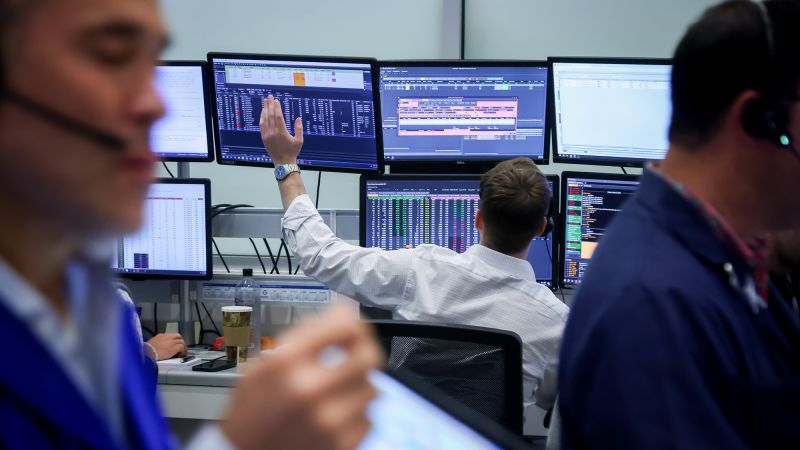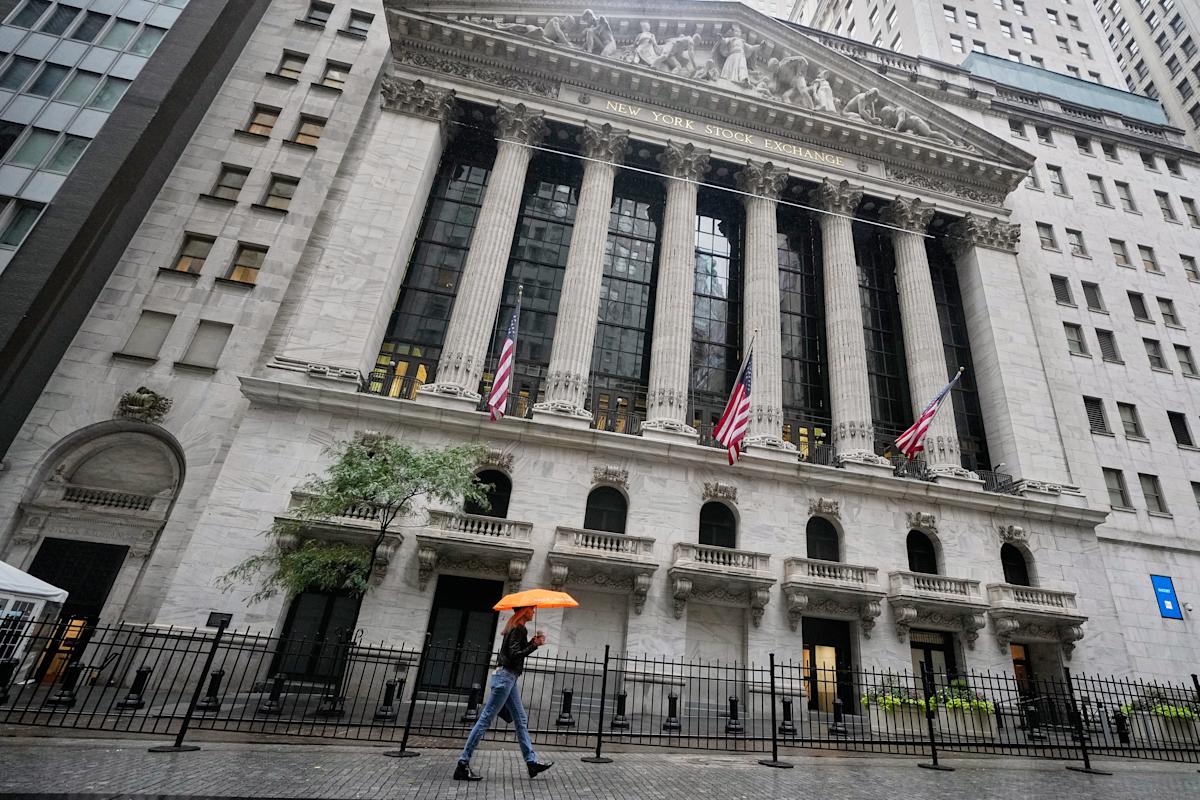New York
—
After months of steadily climbing higher, stocks are bouncing around as investors process renewed US-China trade tensions.
Stocks were mixed on Tuesday in volatile trading: The Dow gained 203 points, or 0.44%, after falling as much as 615 points earlier. The S&P 500 fell 0.16%. The tech-heavy Nasdaq closed 0.72% lower after sinking as much as 2.1% in the session.
Tensions between the world’s two largest economies have reignited with tit-for-tat punitive measures. The prospect of a trade war has injected uncertainty into global markets, sending tech and chip stocks lower and weighing on investors’ outlook.
As traders try to assess whether the trade spat will escalate, stocks are fluctuating and pausing their months-long ascent.
“Market participants had been hoping that the worst of the trade conflict between China and the US was in the past,” Lee Hardman, senior currency analyst at Japanese bank MUFG, said in a note on Monday.
Tensions were initially reignited after China on October 9 unveiled new export controls on rare earths and US President Donald Trump threatened a new 100% tariff the next day.
The back-and-forth has continued: Beijing on Tuesday announced sanctions on five American subsidiary companies of South Korean shipping giant Hanwha Ocean, and it’s also reviewing a US government trade investigation into China’s maritime sector.
Trump said via Truth Social on Tuesday that China is committing an “Economically Hostile Act” by “purposefully not buying our Soybeans.” American soybean farmers have been faced with a lack of demand from China as part of the trade war.
Investors are concerned a resurgent US-China trade war could stoke inflation and raise the risk of an economic slowdown, according to Sam Stovall, chief investment strategist at CFRA Research.
“With the trade war being put back on the front burner, I think investors have a lot more to be worried about,” Stovall said.
The turmoil comes ahead of an anticipated meeting between Trump and Chinese leader Xi Jinping at the APEC summit in South Korea at the end of October.
Wall Street’s fear gauge, the VIX, jumped 31% on Friday — its biggest one-day gain since April — before falling 12% on Monday.
The VIX gained 9% on Tuesday after briefly rising as much as 20%. The fluctuations are emblematic of the rise in uncertainty and heightened geopolitical risks.
“The VIX is like the pulse of the market,” Stovall said. “Right now, because of renewed concerns, that pulse has accelerated.”
Tech stocks have helped power the rally this year, but they are sensitive to trade tensions. The AI boom relies on China’s market for sales while trade tensions could also disrupt chip manufacturing supply chains.
Nvidia (NVDA), the largest company in the S&P 500 by market value, has been caught in the crosshairs of the US-China trade spat. Nvidia sank 4.4% on Tuesday.
Tech and chip sectors could see near-term volatility amid ongoing trade talks, according to Ulrike Hoffmann-Burchardi, global head of equities at UBS.
Meanwhile, safe havens like gold and silver are surging — another sign that investors are hedging against geopolitical instability.
The S&P 500 has rallied 33% across six months. Stocks are historically expensive while concerns are mounting about an AI bubble.
At the same time, Wall Street strategists say stocks have more room to run, with strong corporate earnings and Federal Reserve rate cuts supporting the rally.
While stocks have dipped lower because of recent trade concerns, some investors are also buying the dip, helping buoy the market.
“We remain cautiously optimistic that (the US and China) will ultimately pursue a negotiated resolution,” said Hoffmann-Burchardi.


